10 Reasons Why Peonies Fail To Bloom
Though peonies have interesting foliage, most people grow them for the spectacular flowers that they produce. Peonies take center stage as a premier spring and summer cut flower in home and commercial gardens, where they dominate in mixed borders, mass plantings and as a single specimen plant. However, flower growing is not without its obstacles, and perhaps nothing is more disappointing in flower fields and gardens than peonies that fail to bloom, or that produce only a few flowers. If peony growth issues are on your mind, then read on as we share a bit about the 10 most common reasons peonies will fail to bloom.
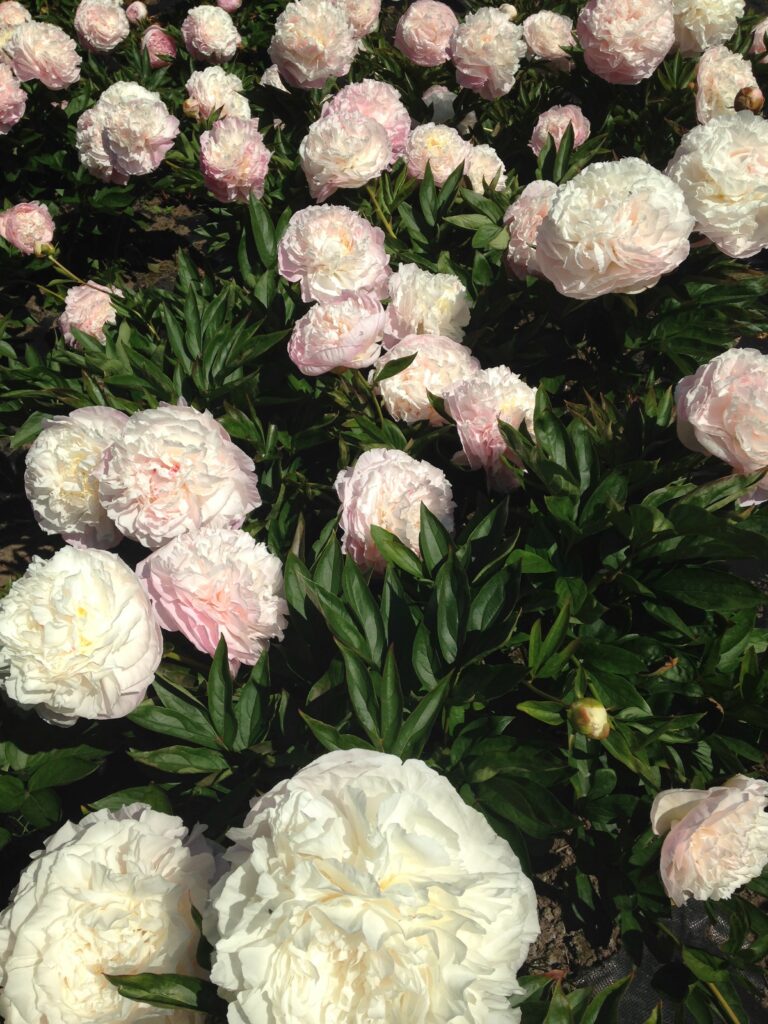
1. Cultivar: Cultivated varieties (cultivars) differ in flower productivity. Some produce a few flowers per plant, while others such as ‘Sarah Bernhardt’ can yield more than 50 flowers per plant. As a grower, its important that you take time to become familiar with the productivity of each cultivar that you’re considering planting, since not all cultivars will bloom as profusely as others. If many flowers are expected, but the plant has been blooming poorly, double check to make sure you’ve selected a cultivar that is bred for heavy bloom production.
2. Plant Age: Newly planted peony roots have few-to-no blooms the first three years because flowering depends on a large, well-developed root system. The plant needs time to develop its fine, fibrous root system, which is used for up-taking water and nutrients, as well as the large storage roots, which provide the plant with the carbohydrates necessary for flower bud development and growth. Additional fibrous and storage roots are added annually and will support an ever-increasing crown of flowering and vegetative buds. The more storage roots that form, the greater the potential for flowers. Optimum flower productivity usually begins by year three to five depending on location, so don’t feel discouraged if it takes a few years for the plant to reach its potential.
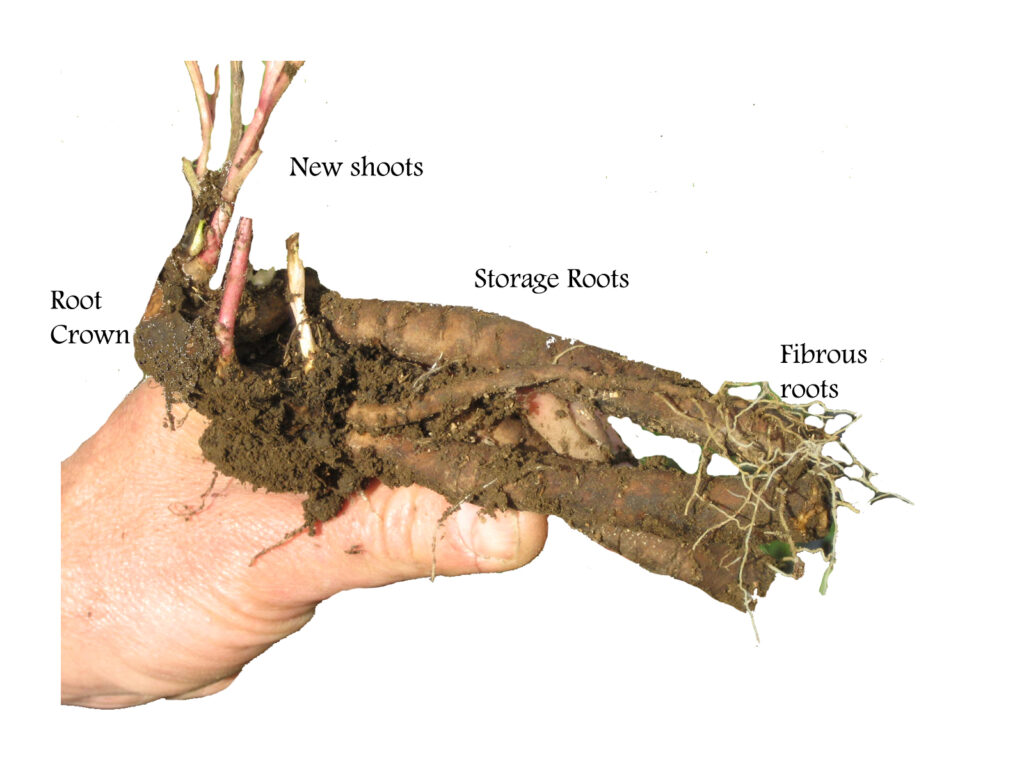
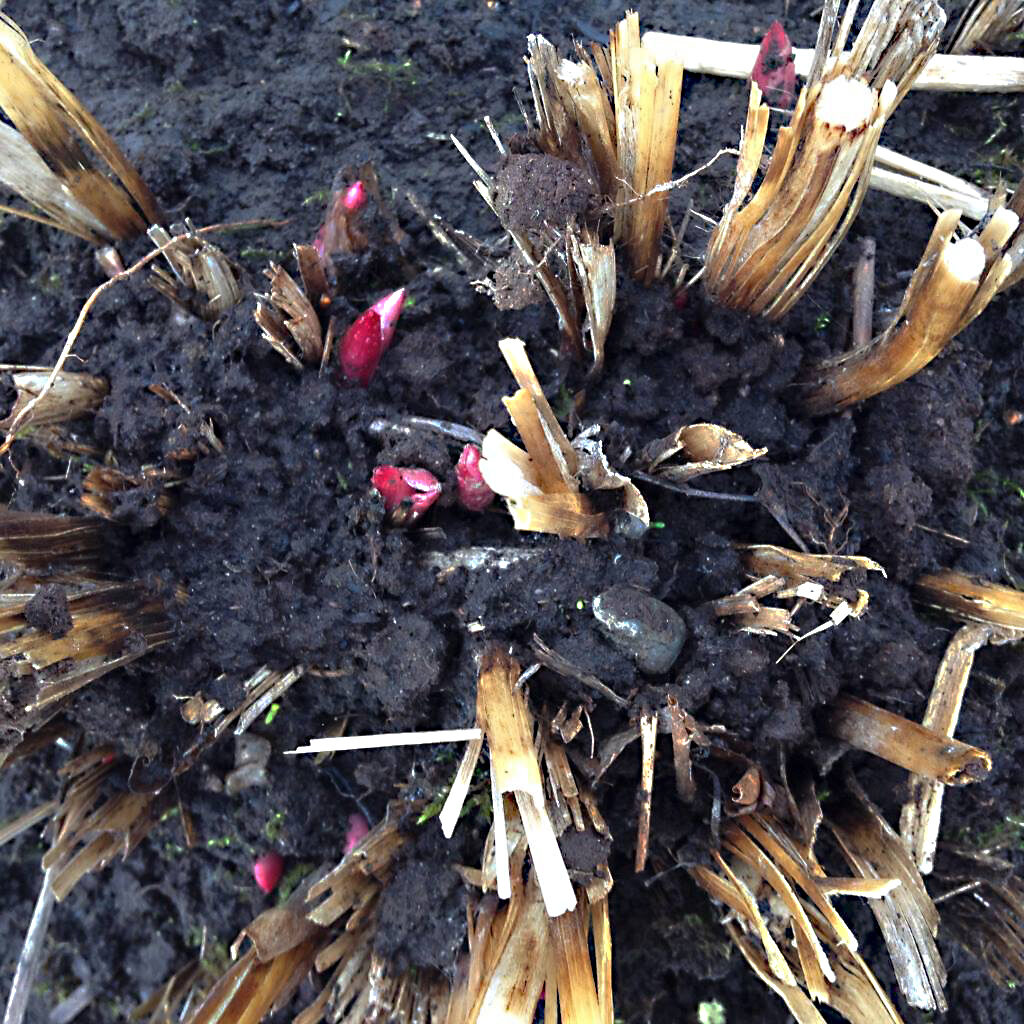
3. Planting Depth and Position: If the crown buds are planted too deeply (more than 2 inches [5 cm] below the surface) flowering will be reduced, delayed or fail completely. Poor flowering can also occur if roots are planted upside down or if crown buds are buried too deeply by adding too much compost after planting.
4. Winter Bud Damage: Many peony cultivars require winter protection with mulch, snow, or frost blankets to protect the flower buds. If the dormant bud temperature falls below 23 oF (–5 oC) then the flower buds can be killed. Vegetative buds that are slightly more hardy than flower buds can survive or emerge very late in the season, thus leading to green bushes with few or no flowers.
5. Spring Frost Damage: After growth starts in spring, a late frost (<29oF; –2oC) during the first two to three weeks of growth can kill young shoots and flower buds. Growers cover plants with protective frost blankets when severe frost is predicted.
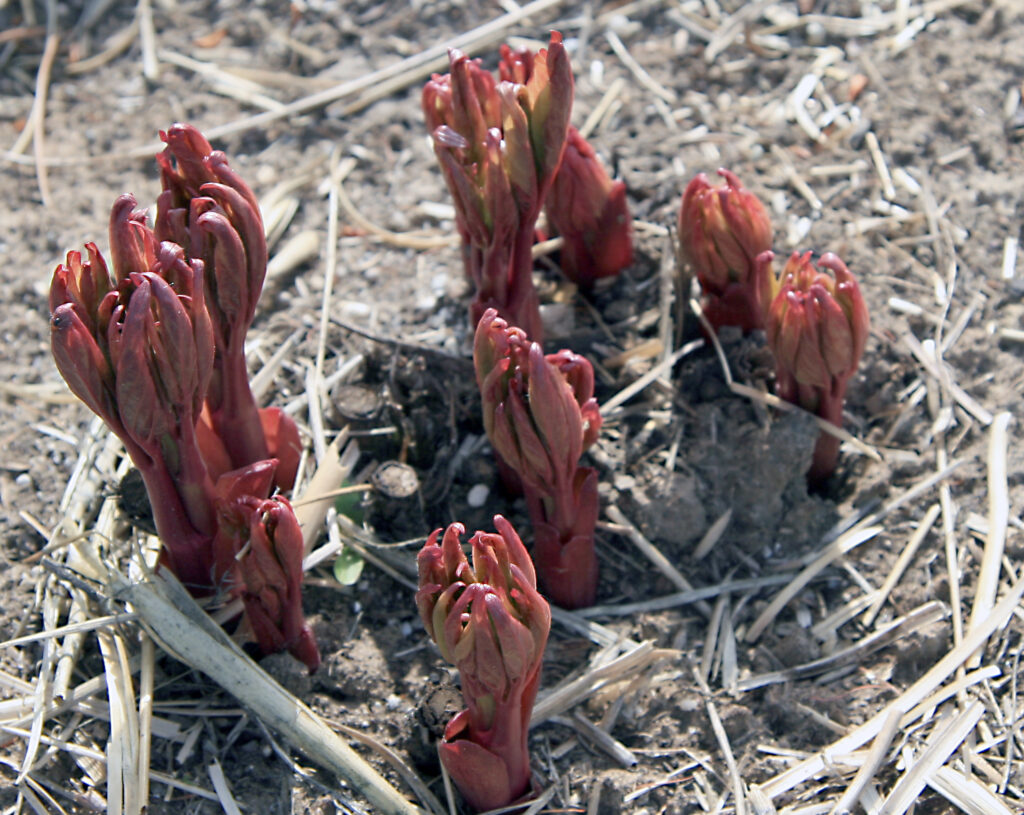
6. Soils and Nutrients: Peonies will grow in a variety of soil types but they thrive in deep, well composted loam soils with a pH near neutral. They also grow and flower best with annual applications of a complete fertilizer. Lack of blooms may be because of poor soils or inadequate fertilizers. Plants may have thin, floppy stems and pale-colored foliage if fertilizers are inadequate. Conversely, too much fertilizer, especially nitrogen, can lead to very bushy plants with abundant dark green foliage, but few flowers. Complete a soil test to identify and remedy issues.
7. Water – Too Much/Too Little: Peonies require well drained soils during both summer and winter. Waterlogged soils promote rot, especially of the large storage roots. Growers avoid planting in low, wet areas of fields and use diversion ditches, drainage tiles and sometimes raised beds to avoid wet soils. Peonies, especially older plants, those growing in sandy soils, or in dry locations, require irrigation to maintain optimum growth and flowering. Moisture stress early in the season can cause flower buds to abort. Late in the season, moisture stress will interfere with development of next season’s flower buds.
8. Heavy Shade: Peonies bloom best in full sun. They can tolerate partial shade, especially in warm climates, but flowering will be reduced as shade increases because ample photosynthesis is required to renew the carbohydrates each year in the storage roots. Robust, carbohydrate-rich storage roots mean more and bigger flowers.
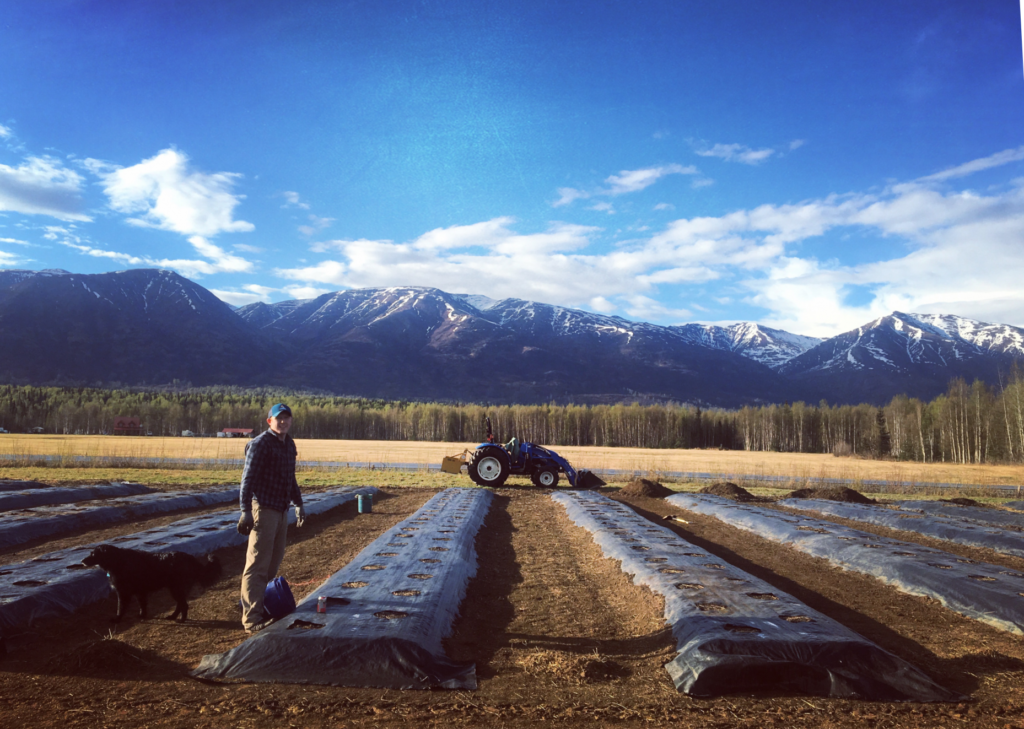
9. Foliage Removal: Foliage is essential for the development of next season’s flower buds. Harvesting too many cut flowers from a plant reduces foliage and photosynthesis, and can reduce flower bud development the next season. Cut flower growers limit the number of cut stems they harvest from any one plant to protect future yields. Some people cut back foliage in late summer, similar to irises and day-lilies, especially if plants show signs of disease. Cut flower growers try to keep fall foliage intact as long as possible until the soils freeze. Even in late summer, underground flower buds are developing and maturing. As long as the foliage is green and not frozen, it is adding carbohydrates to the development of next year’s flowers.
10. Disease: Under most circumstances, disease pressure is not severe enough to kill plants, but foliage diseases, especially Botrytis gray mold, can interfere with photosynthesis and carbohydrate production thus reducing flowering in subsequent seasons. Cut flower growers and gardeners who promote healthy green foliage with appropriate disease control will be rewarded with great flowering.
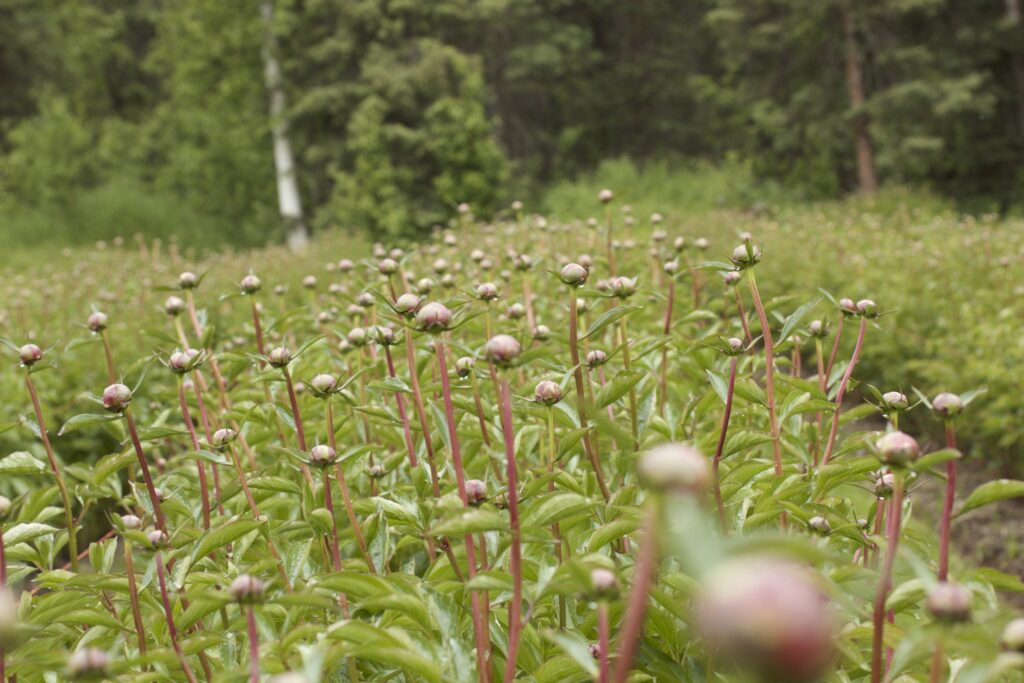
With a little investigation into the potential reason for the under-performing peony plant, the problem should be easy to correct for a better result the following year. For expert advise and assistance with a soil sample, contact your local Cooperative Extension Service office. They can also interpret the results of the soil test to make a nutrient application recommendation if necessary.
Happy Gardening!
-Written By: Dr. Patricia Holloway Professor Emerita, Horticulture, University of Alaska Fairbanks

